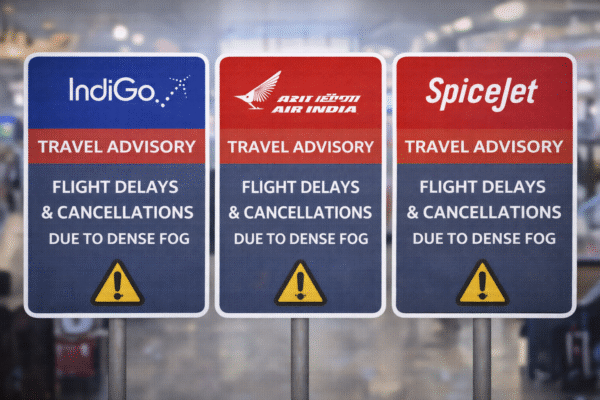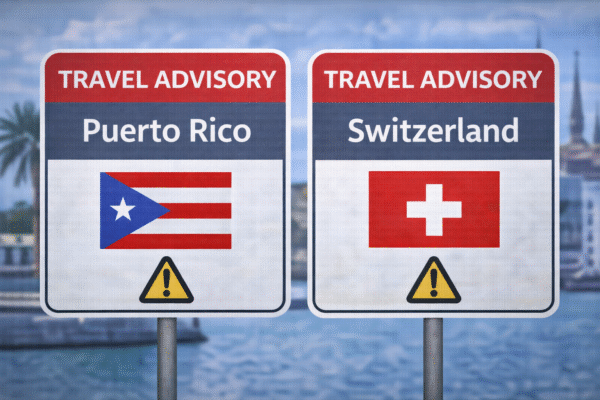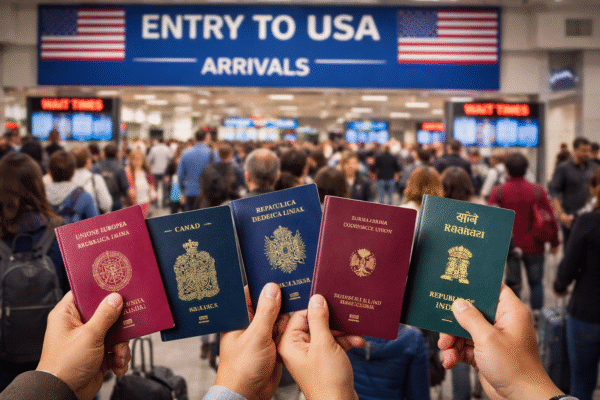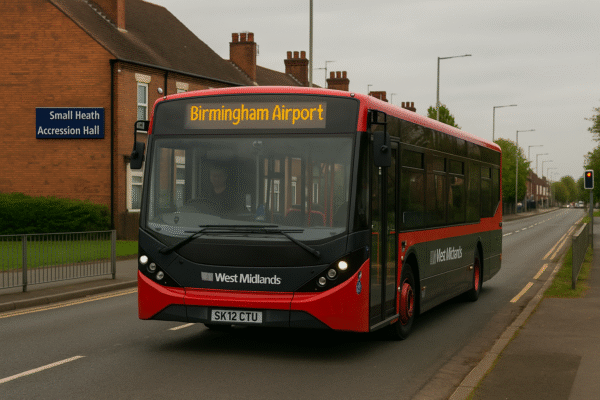In a major move to enhance public transportation in the West Midlands, UK transport authorities and National Express West Midlands have launched the new 17A bus route, linking Birmingham city centre with Birmingham Airport. Starting Sunday, August 4, 2025, this direct service will run every 30 minutes, traversing key eastern suburbs including Small Heath, Yardley, and Tile Cross.
This initiative is part of a broader regional strategy to reduce traffic congestion, improve airport accessibility, and support Birmingham’s clean air goals. With this launch, the city takes another significant step toward a sustainable and inclusive mobility system, aiming to shift more commuters from cars to public transport.
Direct, Frequent, and Accessible
The 17A bus service is designed to be both frequent and accessible, offering half-hourly departures throughout the day. By cutting down on multi-leg journeys that previously involved several transfers or expensive taxis, the new route will make travel to and from the airport faster, simpler, and more affordable for thousands of residents.
Notably, the new service fills a long-standing gap for communities in Small Heath, Yardley, and Tile Cross, which previously lacked direct, reliable airport connections. According to Birmingham City Council’s transportation division, this improvement could potentially serve over 50,000 residents along the corridor.
Building on the Success of Route 97A
The 17A follows the successful extension of Route 97A in July 2024, which now links Chelmsley Wood and Bordesley Green with the airport. That update led to a measurable increase in airport-bound passengers using public transit.
In a joint press release, Birmingham Airport and National Express West Midlands confirmed that the 17A is the result of extensive community feedback, traffic flow analysis, and consultations with airport workers and transport advocacy groups.
Cutting Carbon Emissions Through Public Transport
Environmental sustainability is a key pillar of the new service. The introduction of the 17A route directly aligns with Birmingham’s climate action strategy, which includes aggressive targets for reducing emissions from transportation—a sector that contributes more than 20% of the city’s total carbon output, according to UK Department for Transport data.
“Getting people to switch from private cars to efficient public transport is central to our decarbonisation plan,” said a spokesperson from Transport for West Midlands (TfWM). “With the 17A, we’re reducing congestion, cutting emissions, and offering residents a real alternative to the car.”
Birmingham Airport, which aims to achieve net zero carbon emissions by 2033, views improved bus access as essential to achieving that target. The airport’s latest sustainability report cited surface access—how people get to and from the airport—as one of its top environmental challenges.
Benefits for Commuters and Local Economy
Beyond the green benefits, the new route offers social and economic advantages for the communities it serves. Improved transit access enhances employment opportunities, especially for those working irregular shifts at the airport or nearby industrial zones. It also boosts economic activity in local shopping areas, increasing customer footfall and business viability.
“Residents in Yardley and Tile Cross have long needed better public transport options,” said Councillor Liz Clements, Cabinet Member for Transport. “The 17A delivers on that promise and supports our wider goal of equitable access to jobs and services.”
For tourists and business travelers, the new service enhances Birmingham’s reputation as a well-connected gateway city. With airport footfall expected to surpass pre-pandemic levels by early 2026, according to VisitBritain, robust ground transport is vital for sustaining tourism growth.
Enhanced Connectivity as Part of a Broader Vision
The 17A is not an isolated improvement. It’s part of a comprehensive regional transport strategy, which includes fleet electrification, smart ticketing, low-emission zones, and integrated transport hubs.
National Express West Midlands has committed to converting its entire bus fleet to zero-emission vehicles by 2030, and the 17A route will be among the early adopters of these green technologies. Riders can also benefit from contactless fare systems, real-time journey tracking, and discounted travel passes through regional smart mobility programs.
TfWM has indicated that further bus corridor investments will soon be announced, potentially connecting underserved areas like Sheldon, Kitts Green, and Marston Green with similar airport-access improvements.
What to Expect Starting This Sunday
The 17A will begin full operations on Sunday, August 4, with departures every 30 minutes, seven days a week. The service will operate from early morning until late evening, ensuring convenience for early flights and night shift workers. Timetables, route maps, and ticketing information are available through the National Express West Midlands website and TfWM journey planner.
Residents, tourists, and airport employees are encouraged to try the new service and provide feedback during the initial rollout phase, which will inform future route adjustments.
Final Thoughts
As Birmingham accelerates its transformation into a modern, sustainable city, the 17A bus route stands out as a meaningful and practical innovation. By improving airport connectivity through underserved areas like Small Heath, Yardley, and Tile Cross, the service delivers environmental, economic, and social value.
In a time when urban mobility challenges are intensifying across the UK, Birmingham’s commitment to inclusive public infrastructure offers a replicable model for other cities aiming to balance growth with climate responsibility.
For more travel news like this, keep reading Global Travel Wire



















